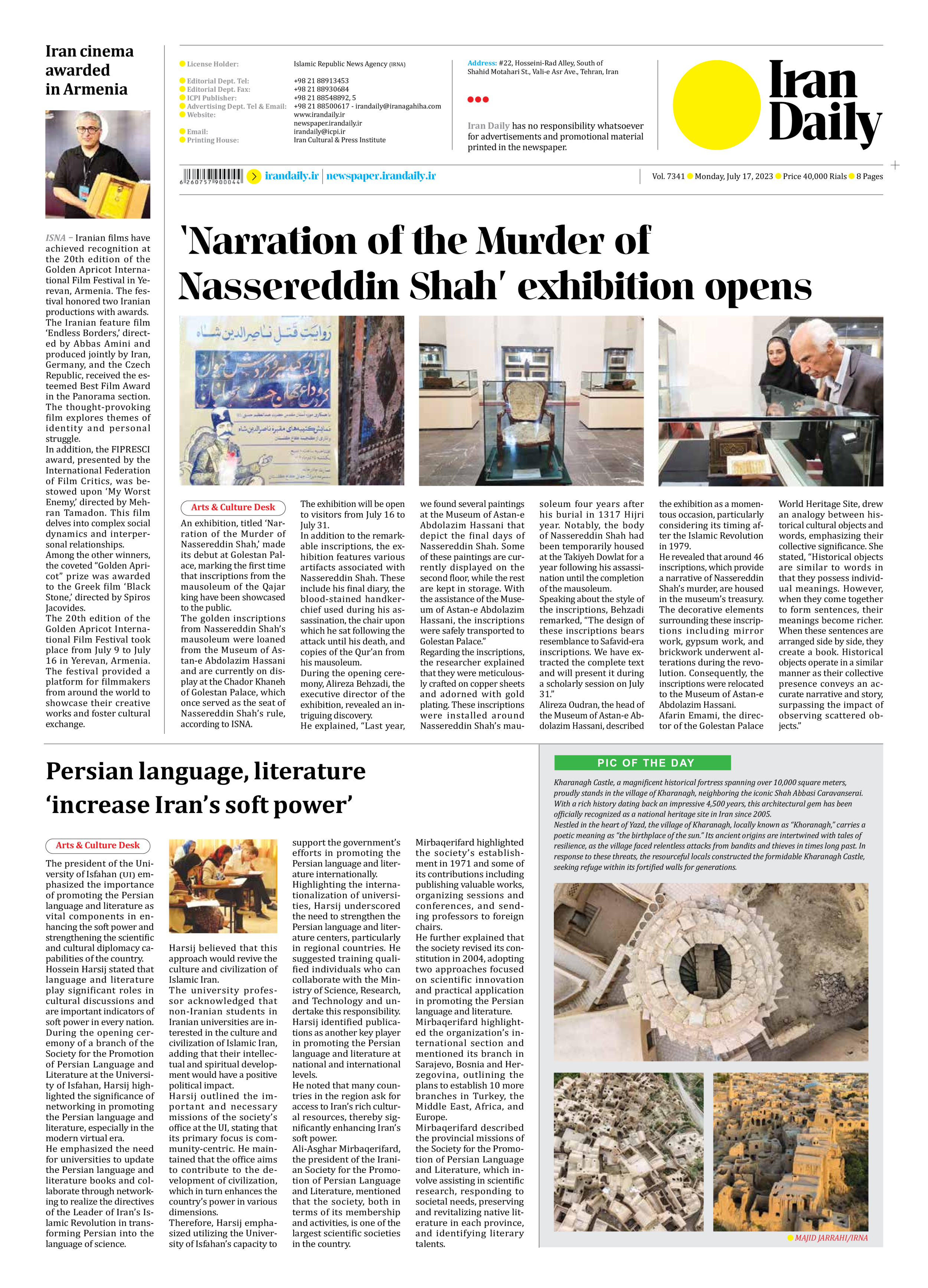
‘Narration of the Murder of Nassereddin Shah’ exhibition opens
An exhibition, titled ‘Narration of the Murder of Nassereddin Shah,’ made its debut at Golestan Palace, marking the first time that inscriptions from the mausoleum of the Qajar king have been showcased to the public.
The golden inscriptions from Nassereddin Shah’s mausoleum were loaned from the Museum of Astan-e Abdolazim Hassani and are currently on display at the Chador Khaneh of Golestan Palace, which once served as the seat of Nassereddin Shah’s rule, according to ISNA.
The exhibition will be open to visitors from July 16 to July 31.
In addition to the remarkable inscriptions, the exhibition features various artifacts associated with Nassereddin Shah. These include his final diary, the blood-stained handkerchief used during his assassination, the chair upon which he sat following the attack until his death, and copies of the Qur’an from his mausoleum.
During the opening ceremony, Alireza Behzadi, the executive director of the exhibition, revealed an intriguing discovery.
He explained, “Last year, we found several paintings at the Museum of Astan-e Abdolazim Hassani that depict the final days of Nassereddin Shah. Some of these paintings are currently displayed on the second floor, while the rest are kept in storage. With the assistance of the Museum of Astan-e Abdolazim Hassani, the inscriptions were safely transported to Golestan Palace.”
Regarding the inscriptions, the researcher explained that they were meticulously crafted on copper sheets and adorned with gold plating. These inscriptions were installed around Nassereddin Shah’s mausoleum four years after his burial in 1317 Hijri year. Notably, the body of Nassereddin Shah had been temporarily housed at the Takiyeh Dowlat for a year following his assassination until the completion of the mausoleum.
Speaking about the style of the inscriptions, Behzadi remarked, “The design of these inscriptions bears resemblance to Safavid-era inscriptions. We have extracted the complete text and will present it during a scholarly session on July 31.”
Alireza Oudran, the head of the Museum of Astan-e Abdolazim Hassani, described the exhibition as a momentous occasion, particularly considering its timing after the Islamic Revolution in 1979.
He revealed that around 46 inscriptions, which provide a narrative of Nassereddin Shah’s murder, are housed in the museum’s treasury. The decorative elements surrounding these inscriptions including mirror work, gypsum work, and brickwork underwent alterations during the revolution. Consequently, the inscriptions were relocated to the Museum of Astan-e Abdolazim Hassani.
Afarin Emami, the director of the Golestan Palace World Heritage Site, drew an analogy between historical cultural objects and words, emphasizing their collective significance. She stated, “Historical objects are similar to words in that they possess individual meanings. However, when they come together to form sentences, their meanings become richer. When these sentences are arranged side by side, they create a book. Historical objects operate in a similar manner as their collective presence conveys an accurate narrative and story, surpassing the impact of observing scattered objects.”







